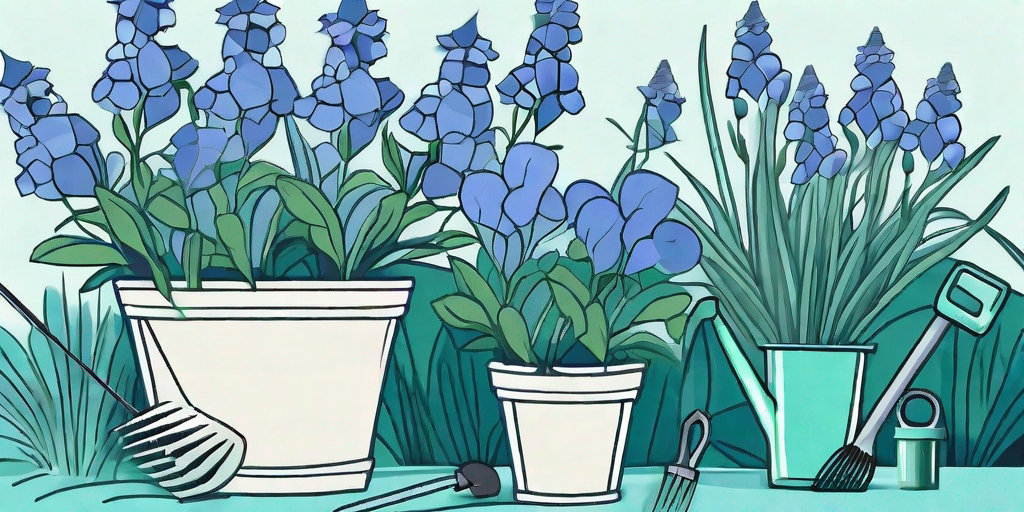
Blue Bell flowers, with their delicate, bell-shaped blooms and vibrant blue hue, have been enchanting gardeners and flower enthusiasts for centuries. These charming flowers, also known as Hyacinthoides non-scripta, are a symbol of constancy and everlasting love. But beyond their symbolic significance, Blue Bells are also a joy to cultivate. With the right care and attention, they can transform any garden into a magical, blue-tinted wonderland.
Understanding the Blue Bell Flower
Before we dive into the nitty-gritty of Blue Bell cultivation, let's take a moment to appreciate the unique characteristics of these lovely flowers. Native to western Europe, Blue Bells are woodland plants that thrive in cool, shaded areas. Their vibrant blue petals, which are shaped like tiny bells, are a sight to behold, especially when they sway gently in the breeze.
The Blue Bell's enchanting beauty is not its only claim to fame. This flower is also known for its sweet, heady fragrance, which can fill the air with a delightful scent. In fact, a field of Blue Bells in full bloom is not just a visual feast, but also an olfactory delight.
The Blue Bell's Life Cycle
Blue Bells are perennial plants, which means they bloom year after year. Their life cycle begins in the spring, when their green, leafy shoots emerge from the ground. By late spring, the flowers are in full bloom, creating a sea of blue in gardens and woodlands.
After the flowering period, the Blue Bells' leaves start to wither, and the plants go into a dormant phase. But fear not, for they are merely gathering strength for the next blooming season. Come spring, they will rise again, ready to dazzle us with their beauty.
How to Grow Blue Bell Flowers
Now that we've waxed poetic about the Blue Bell's beauty and life cycle, let's get down to business: how to grow these beauties in your own garden. While Blue Bells are relatively easy to grow, they do require some specific conditions to thrive.
Firstly, Blue Bells prefer cool, shaded areas. They are woodland plants, after all. So, if your garden is a sun-drenched paradise, you might want to create some shade for your Blue Bells. Secondly, these flowers prefer well-drained soil. Waterlogged soil can lead to bulb rot, which is a surefire way to kill your Blue Bells.
Planting Blue Bell Bulbs
Blue Bells are grown from bulbs, which should be planted in the autumn. Here's a step-by-step guide to planting Blue Bell bulbs:
- Choose a spot in your garden that is shaded or semi-shaded.
- Prepare the soil by removing any weeds or stones, and adding some compost or well-rotted manure.
- Plant the bulbs about 10cm deep and 10cm apart.
- Water the bulbs after planting, but avoid waterlogging the soil.
Caring for Blue Bell Flowers
Once your Blue Bells are planted, they require minimal care. However, there are a few things you can do to ensure they thrive:
- Water them regularly, but avoid overwatering. The soil should be moist, not waterlogged.
- After the flowering period, allow the leaves to die back naturally. This allows the plant to store energy for the next blooming season.
- Avoid cutting or mowing the leaves until they have completely died back.
Common Problems and Solutions
While Blue Bells are generally hardy plants, they can sometimes encounter problems. Here are some common issues and how to solve them:
Bulb Rot
Bulb rot is often caused by waterlogged soil. If your Blue Bells are showing signs of bulb rot, such as yellowing leaves or stunted growth, you may need to improve the drainage of your soil. Adding organic matter, such as compost or well-rotted manure, can help improve soil drainage.
Pests
Blue Bells can sometimes be attacked by pests, such as slugs and snails. These pests can be deterred by using organic slug pellets or by creating a barrier around your plants with crushed eggshells or copper tape.
Frequently Asked Questions
- When do Blue Bells bloom?
- Blue Bells bloom in late spring, usually in April or May.
- Can Blue Bells grow in full sun?
- While Blue Bells can tolerate some sun, they prefer shaded or semi-shaded areas.
- How long do Blue Bells live?
- As perennial plants, Blue Bells can live for many years, blooming each spring.
So there you have it, a comprehensive guide to growing and caring for Blue Bell flowers. With a bit of care and attention, you can transform your garden into a blue-tinted wonderland. Happy gardening!















